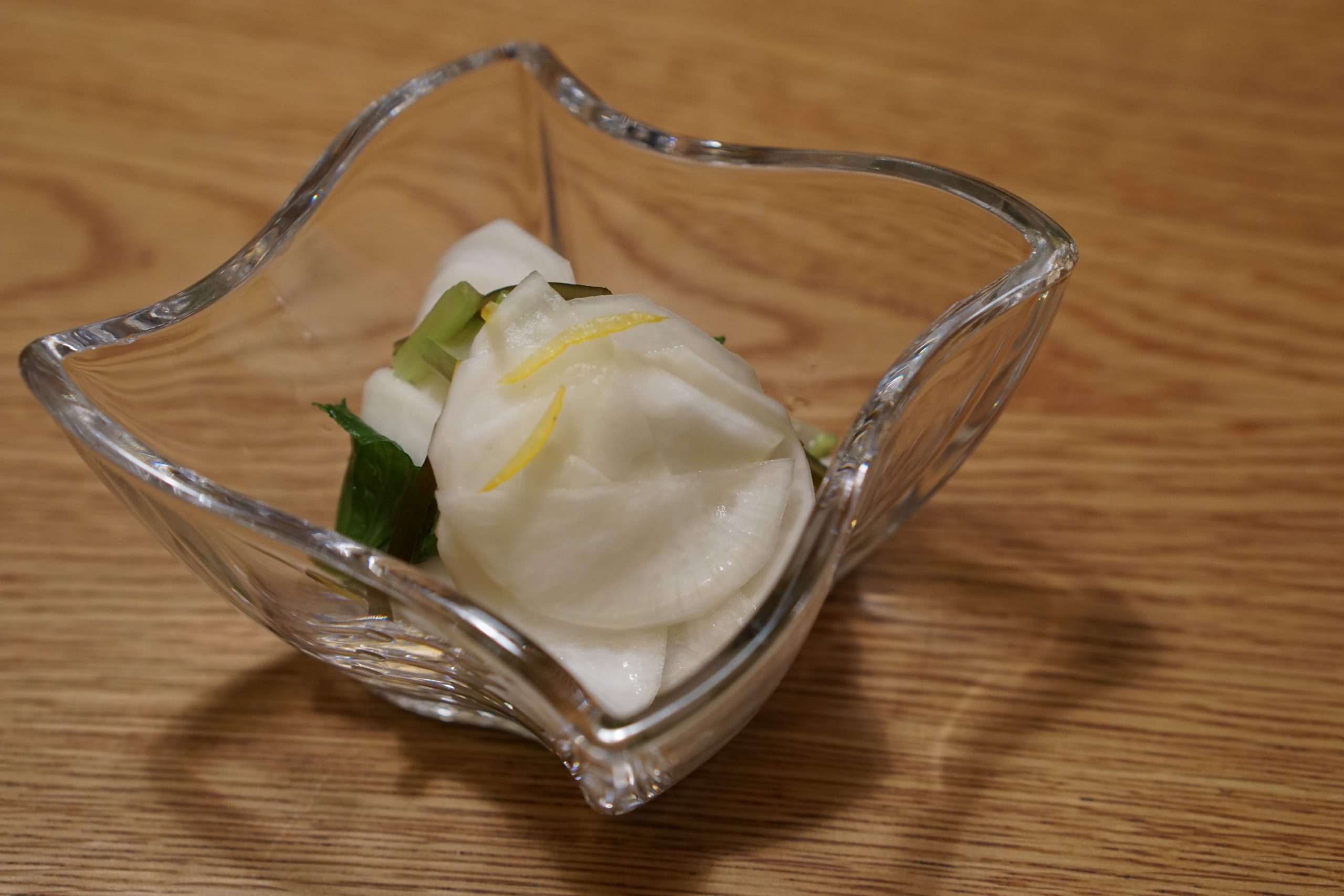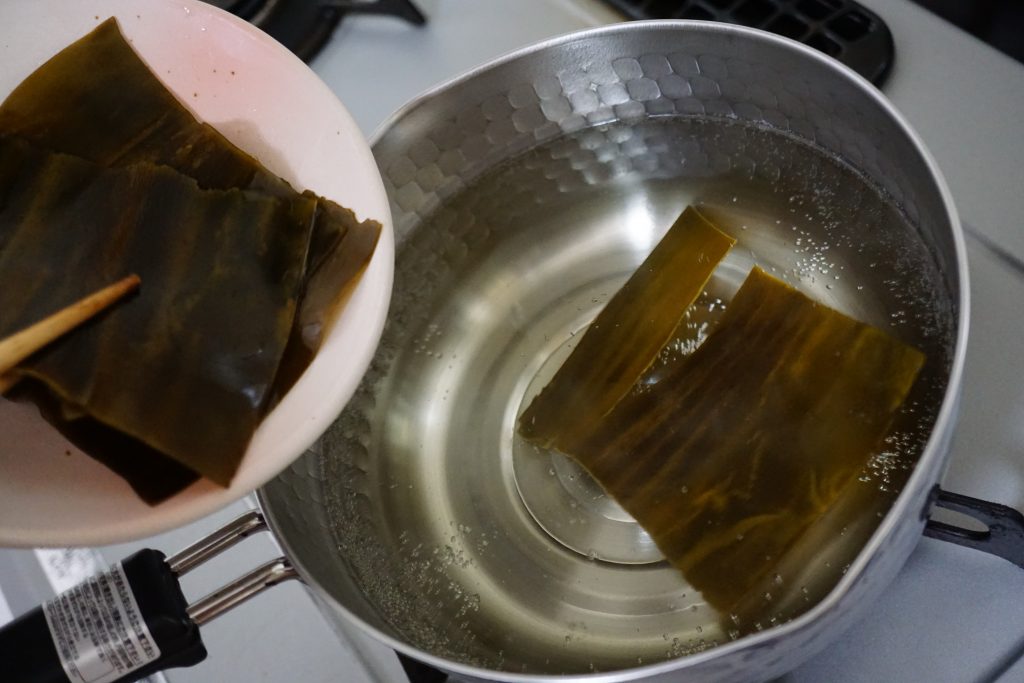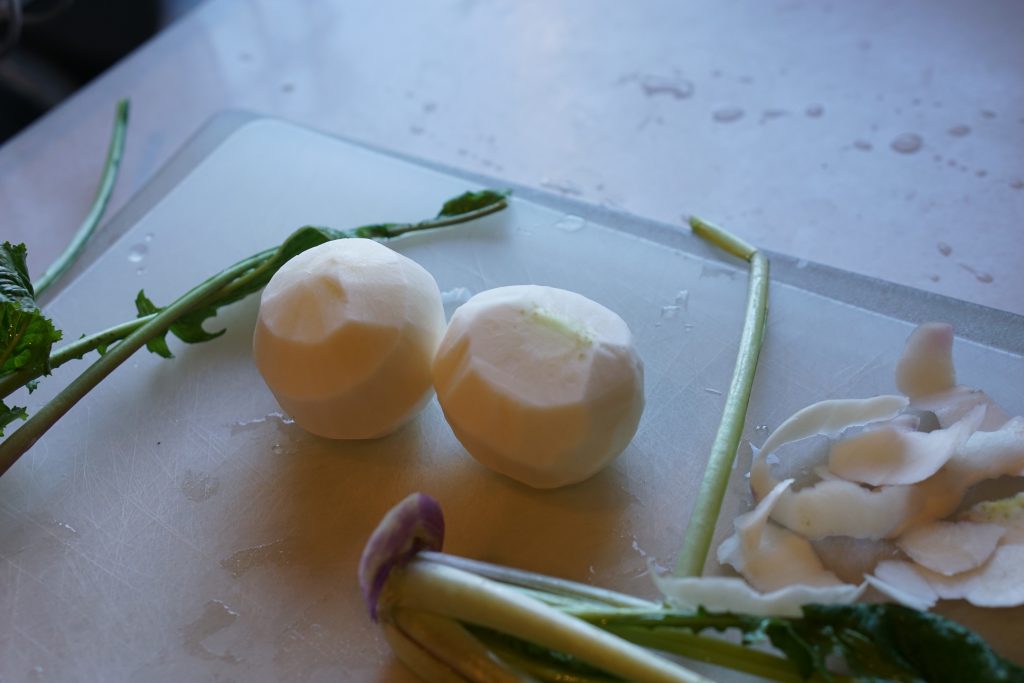The Japanese turnip is quite a versatile vegetable. If cooked it will become soft to the point of crumbling in your mouth, and eaten raw or half-cooked it has a satisfyingly crunchy texture. Known as either kabu or kabura in Japan, it can be boiled, steamed, fried or baked. And as demonstrated in this recipe, it’s yummy pickled as well!
Tsukemono is the umbrella term for pickled vegetables. This recipe only uses salt for the pickling, making it a shiozuke (salt pickled) type of tsukemono. It would also fit in the asazuke category, which refers to veggies that are only lightly pickled, as opposed to those pickled for days, weeks or even months…
Another famous pickled turnip dish is kabura no senmaidzuke, or “a thousand piece pickled turnip”. The turnip is cut so thin that there appear to be a thousand paper-thin slices. Feel free to give it a try, but watch your fingers!

Lightly Pickled Turnip
Ingredients
- 1 Japanese turnip
- 3 cm strip yuzu zest or lemon zest
- 3×3 cm piece kombu dry or second-use (i.e. kombu that’s already been used to make dashi)
- ¼ tsp salt
Instructions
- 「PREP」If using a piece of kombu that’s already been used once to make dashi, skip this step and proceed to the rest of the recipe.If using a dry piece of kombu, first wipe off the powder, then place in a pot of water and heat until just before it boils – don’t let it boil or it will become slimy! You can use the kombu-flavoured water for dashi if you’d like.

- Thinly slice the kombu. Cut the stem and leaves off the turnip and chop them into 1cm pieces. Cut the turnip in half lengthwise and thinly slice. Julienne the yuzu (or lemon) zest.

- Combine all the ingredients in a bowl or pickle press and mix well. If using a pickle press, put on the weighted or spring-loaded lid; if you don’t have one, just fill another bowl with water or any somewhat heavy object to weigh down the ingredients in the lower bowl.

- Set aside for an hour or more. It can be made in advance, or while preparing other dishes. And it keeps well, so why not make a little extra for tomorrow!

Did you make this recipe?
Please let us know how it turned out for you! Leave a comment below and tag @oishiwashokurecipes on Instagram and hashtag it #oishiwashokurecipes.
